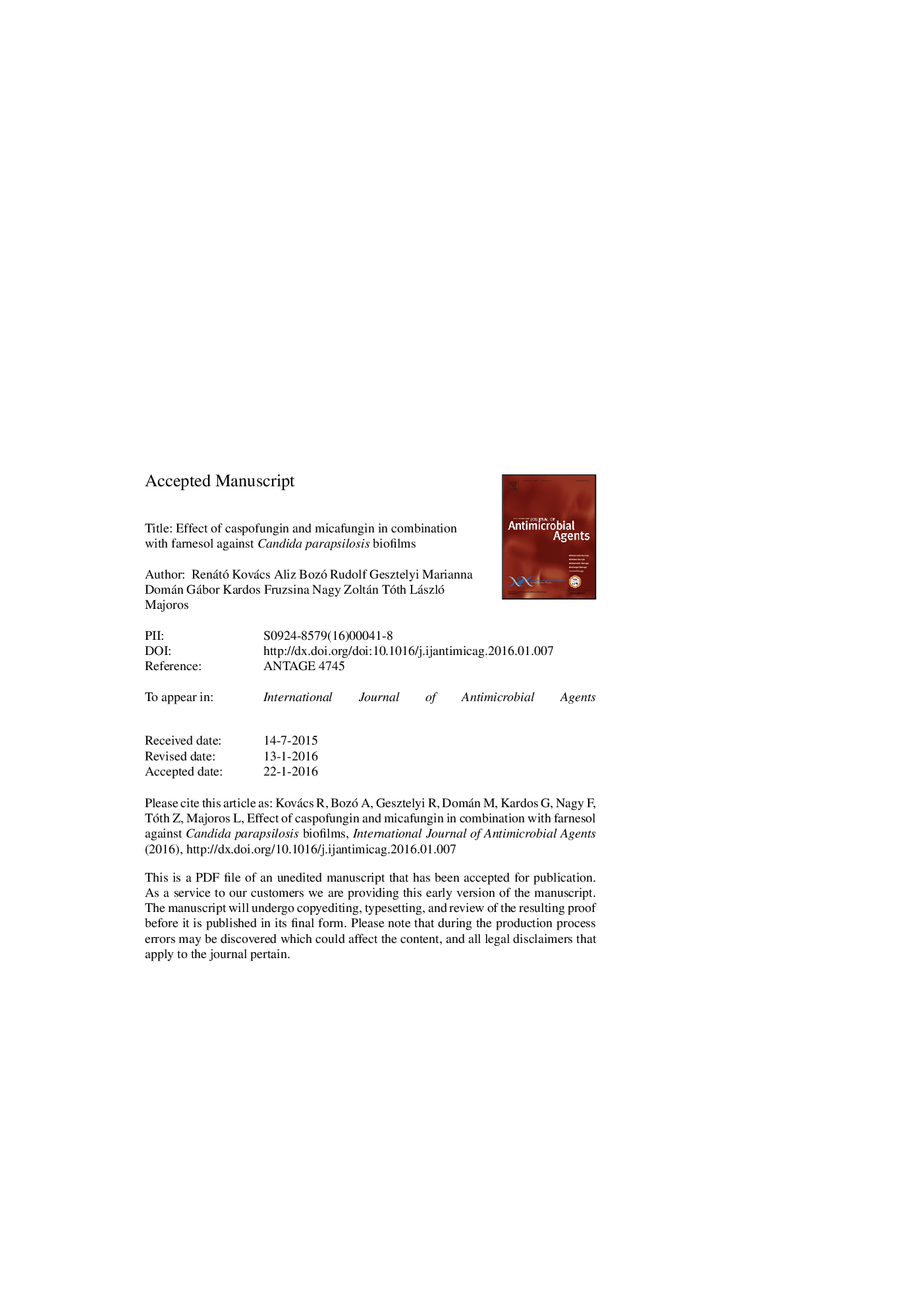| Article ID | Journal | Published Year | Pages | File Type |
|---|---|---|---|---|
| 6117595 | International Journal of Antimicrobial Agents | 2016 | 33 Pages |
Abstract
The in vitro activities of caspofungin and micafungin were determined with and without farnesol against Candida parapsilosis biofilms. Drug interactions were examined using the XTT colorimetric assay-based broth microdilution chequerboard method. Drug-drug interactions were assessed utilising the FICI, Bliss independence models and time-kill experiments. Median sessile MICs of five C. parapsilosis clinical isolates ranged between 32-256 mg/L, 16-512 mg/L and >300 μM for caspofungin, micafungin and farnesol, respectively. Median MICs for caspofungin and micafungin in combination with farnesol showed 8-64- and 4-64-fold decreases, respectively. Paradoxical growth noticed with both echinocandins was eliminated by farnesol. Based on FICIs for sessile clinical isolates, synergism was observed for caspofungin (range of median FICIs, 0.155-0.5) and micafungin (range of median FICIs, 0.093-0.5). Concordantly, MacSynergy analysis and global fitting of non-linear regression based on a Bliss independence models also showed synergism for caspofungin and micafungin. In line with FICI findings and the Bliss independence model, synergistic interactions were confirmed by time-kill experiments. The metabolic activity of fungal cells was significantly inhibited by caspofungin + farnesol at all three tested combinations (4 mg/L + 75 μM, 8 mg/L + 75 μM and 16 mg/L + 75 μM) between 3 and 24 h compared with the control (P < 0.05-0.001). Significant inhibition was observed for micafungin + farnesol between 3 and 12 h (P < 0.001) but not at 24 h. Despite the favourable effect of farnesol in combination with echinocandins, further in vivo studies are needed to confirm its therapeutic advantage in catheter-associated infections caused by C. parapsilosis.
Keywords
Related Topics
Life Sciences
Immunology and Microbiology
Applied Microbiology and Biotechnology
Authors
Renátó Kovács, Aliz Bozó, Rudolf Gesztelyi, Marianna Domán, Gábor Kardos, Fruzsina Nagy, Zoltán Tóth, László Majoros,
